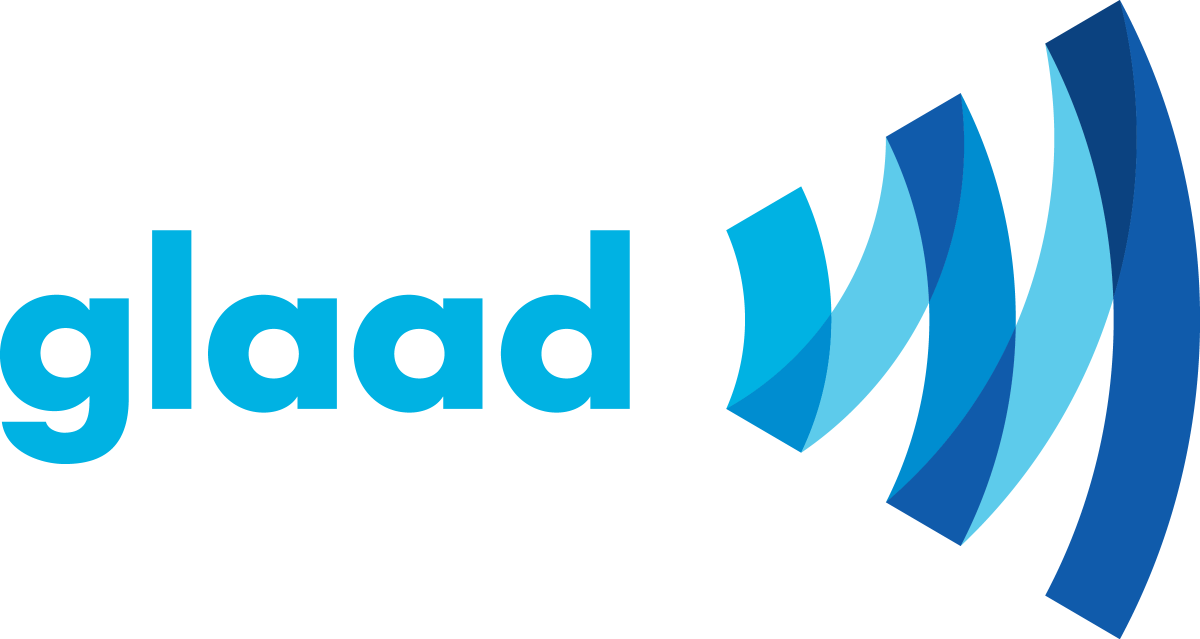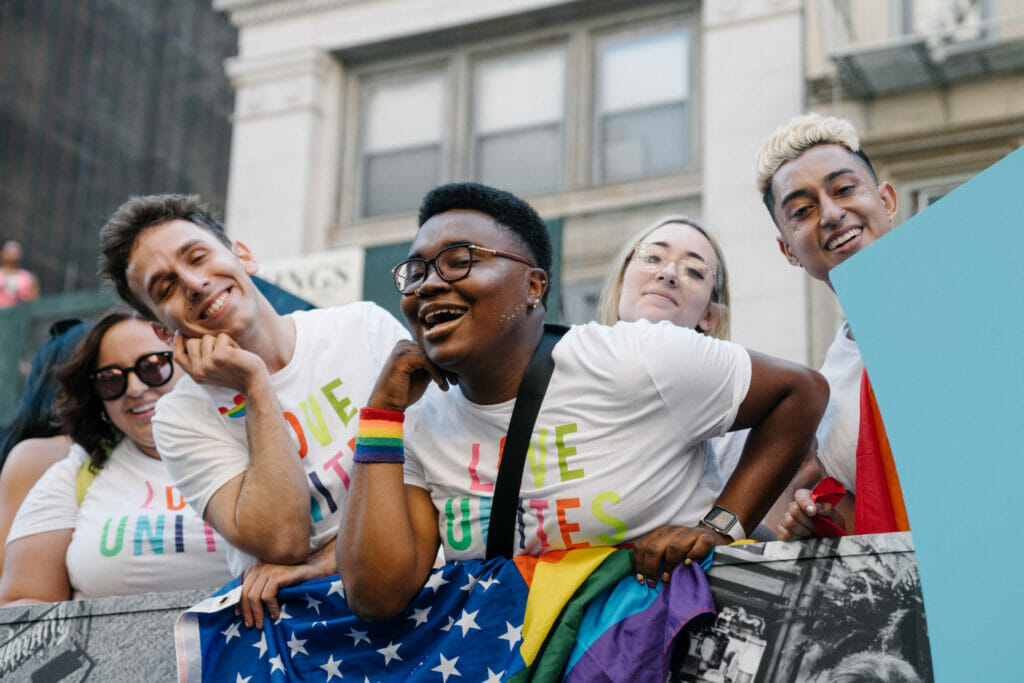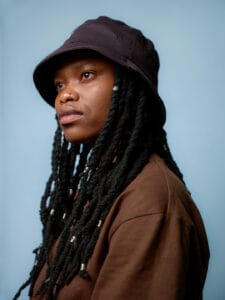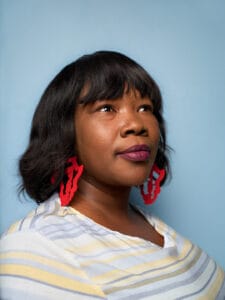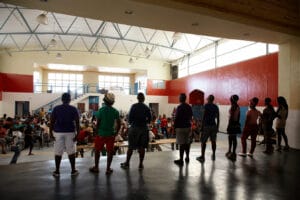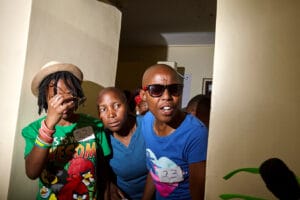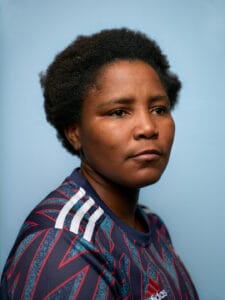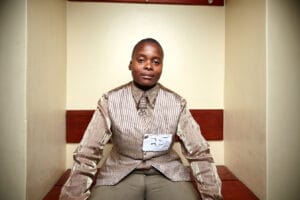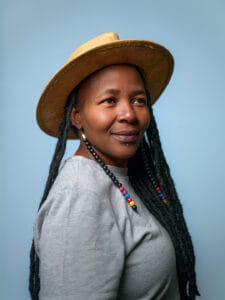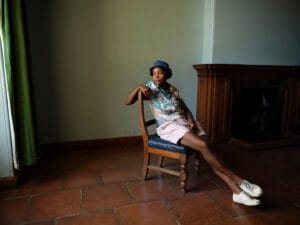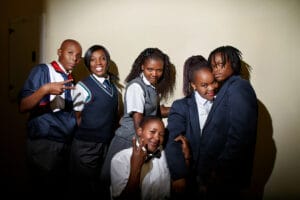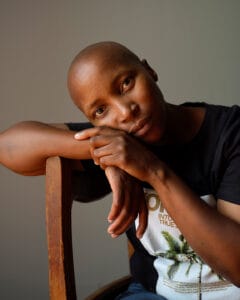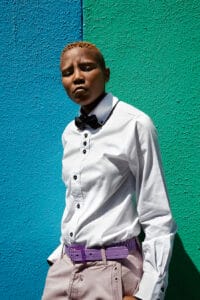Updated for Pride Month 2025, GLAAD is providing fast facts on research and data about the LGBTQ community, non-LGBT Americans’ perceptions, consumer sentiment, and more.
This year, a survey conducted by Ipsos using the probability-based KnowledgePanel, which examined consumer sentiment regarding corporate engagement with LGBTQ communities and Pride Month, found that 85% of consumers believed CEO’s had a responsibility to speak up about issues that matter to consumer. The survey also sought consumer opinion on core corporate values and on chief executives’ obligations to shareholders on issues that matter.
Key Findings included:
- 70% of Americans say knowing a brand/store offers LGBTQ Pride collections/merchandise either has a positive impact or no impact on their purchasing decisions
- 71% of Americans agree that brands and companies should be able to show support to the LGBTQ community during Pride month if they want to
- 64% of Black Americans, 55% of Hispanic Americans, and 60% of those ages 18-34 say they are comfortable with brands publicly supporting LGBTQ organizations and non-profits
- 85% of Americans believe CEOs have a responsibility to speak up about things that matter to their consumers and shareholders
- 81% believe freedom means we all should be able to believe and behave as we choose, as long as it isn’t hurting anyone else
- 74% believe companies should care about their bottom lines more than politics
- Americans are more likely to agree than disagree that offering LGBTQ Pride merchandise is no different from offering merchandise with a sports team logo.
Previously released GLAAD research found that inclusion, when done effectively and with unwavering support for the communities they represent, is good for the bottom line. GLAAD research continues to show that a majority of consumers supported LGBTQ brand engagement during Pride Month, but especially beyond June.
Current State of Anti-LGBTQ Violence
- Data from the ACLU shows over 500 anti-LGBTQ bills this year. Each of the previous three years – 2024, 2023, 2022 and 2021 – were record-setting years for anti-LGBTQ legislation.
- Since June 1, 2022, the ALERT Desk has tracked over 2,240 anti-LGBTQ incidents in all 50 US states and the District of Columbia, including 610+ protests, 360+ propaganda drops, 350+ acts of vandalism, 200+ bomb & mass shooting threats, 180+ assaults, and 45+ cases of arson. Tragically, these incidents have resulted in at least 208 injuries and 31 deaths.
- Updated quarterly, GLAAD’s ALERT Desk map seeks to provide users with up-to-date numbers on anti-LGBTQ incidents nationwide. Users are also able to dive deeper into these statistics by filtering for incidents that specifically targeted drag performers / events; medical care providers of transgender and gender non-conforming people; schools and libraries; and attacks on Pride flags and other related symbols.
- GLAAD is also launching an incident reporting form to better track anti-LGBTQ hate nationally
Support for the LGBTQ Community
- 91% of non-LGBTQ Americans agree that LGBTQ people should have the freedom to live their life and not be discriminated against (GLAAD)
- 61% of non-LGBTQ adults are very or somewhat supportive of the LGBTQ community (MRI-Simmons), totaling over 160M allies in the U.S. alone.
- 55% of non-LGBTQ adults say companies/brands should support the LGBTQ community all year, not just during Pride month (MRI-Simmons)
- According to Gallup, the percent of LGBTQ Americans is up over 160% since 2012.
- Gen Z adults are 2x more likely to BE LGBTQ, 1.6x more likely to KNOW someone in our community, and 1.2x more likely to SUPPORT us. (Gallup 2023, GLAAD’s Accelerating Acceptance 2023, GLAAD’s Advertising Visibility Index 2023)
The LGBTQ Community in Corporate America
- Most Americans believe that business leaders should lead the charge – 53% expect CEOs to inform and shape conversations and policy debates about LGBTQ rights. Even more, 59% of Americans say that if business devoted significant resources to protecting the rights of the LGBTQ community it could have a positive impact.
- Across demographics, Americans seek out employers who take a stand in support of LGBTQ rights: If a brand publicly supports and demonstrates a commitment to expanding and protecting LGBTQ rights, Americans are 2x more likely to buy or use the brand and those aged 18-34 are 5.5x more likely to want to work at a company if it publicly supports and demonstrates a commitment to expanding and protecting LGBTQ rights.
Findings from a 2023 GLAAD and Ipsos poll show a majority of Americans are not opposed to corporate support of Pride:
- Americans are nearly twice as likely to say they would want to back companies facing criticism for supporting people in the LGBTQ community, rather than their critics.
- 74% of Americans are neutral or positively impacted by knowing a company offers Pride merchandise.
- 2 out of 3 Americans are neutral to positive about Pride merchandise in a store seeing it as no different than offering products with a sports team logo or other specialized designs.
- 59% of Americans believe companies offering Pride merchandise are showing support and acceptance of the LGBTQ community.
Learn in our press release more about what we are doing this year here.
GLAAD has also launched a community resource hub and a digital tool kit at GLAAD.org/PRIDE.
